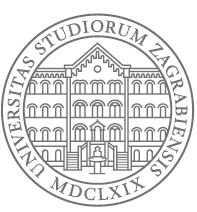| Sažetak | Uspostava kružnog gospodarenja otpadom važan je dio europskog zelenog plana kojim Europa teži postati prvi klimatski neutralan kontinent. Kružnim gospodarenjem otpadom poboljšava se odnos prema resursima i okolišu te ostvaraju značajne gospodarske prednosti u odnosu na linearan pristup gospodarenja otpadom. U ovom radu opisani su i kvantificirani gospodarski i ekološki potencijali kružnog gospodarenja otpadom. Kružno gospodarenje otpadom se temelji na postupcima recikliranja i kompostiranja čime se smanjuju emisije stakleničkih plinova, čuvaju materijalni resursi i štedi energija pri proizvodnji novih proizvoda. Uvodni dio rada pojašnjava probleme linearnog gospodarenja otpadom te objašnjava razloge važnosti prelaska na kružno gospodarenje otpadom. Nakon toga, predstavljeni su načini postupanja s otpadom te su objašnjeni ekološki i gospodarski potencijali u svakom od načina postupanja. Nadalje, napravljen je proračun gospodarskih i ekoloških potencijala transformacije postojećeg sustava gospodarenja grada Zagreba u smjeru kružnog gospodarenja otpadom. Proračunom je pokazano da se kružnim gospodarenjem nešto više od 172 tisuće tona otpada godišnje, koji se sada odlaže, može ostvariti smanjenje emisija stakleničkih plinova od 132 tisuće tona CO2eq, uz uštede energije od čak 3634 TJ energije, uglavnom iz proizvodnih procesa. Usporedbe radi, transformacija sadašnjeg sustava u smjeru energetske oporabe preko goriva iz otpada povećava se sadašnja emisija za oko 40 tisuće tona CO2eq, a ostvaruje se energetski dobitak od 255 TJ energije, odnosno 14 puta manje. To znači da se recikliranjem u odnosu na spaljivanje, osim očuvanja materije, višestruko bolje čuva i sama energija. Što se toka materije tiče, kružno gospodarstvo generira kompost i niz sekundarnih sirovina, pozitivnih ekonomskih vrijednosti, dok energetska oporaba zahtjeva s jedne strane dodatne materijale za obradu dimnih plinova (amonij, vapno, cement, aktivni ugljen), a s druge stvara plinovite (CO2, N2O, čestice, teški metali, razna zagađivala) te krute produkte izgaranja (pepeo, šljaka, neizgoreno, solidifikat, zasićeni aktivni ugljen) koje treba naknadno zbrinuti uz novi trošak. |
| Sažetak (engleski) | Circular waste management is an important part of the European green deal, which aims to make Europe the first climate-neutral continent. Implementation of circular waste management improves resource efficiency, establishes environmental benefits and achieves significant economic advantages compared to a linear approach to waste management. Within this work, the economic and ecological potentials of circular waste management are described and quantified. Circular waste management is based on recycling and composting procedures, which reduce greenhouse gas emissions, preserve material resources and save energy in the production of new products. The introductory part of the paper clarifies the problems of linear waste management and explains the reasons for the importance of switching to circular waste management. After that, different methods of dealing with waste are presented and the ecological and economic potentials of each of the methods are explained. Furthermore, the calculation of the economic and ecological potential of the transformation of the existing management system of the city of Zagreb in the direction of circular waste management was made. The calculation showed that the circular management of slightly more than 172 thousand tons of waste yearly that is now disposed of can achieve a reduction in greenhouse gas emissions of 132 thousand tons of CO2eq, with energy savings of as much as 3634 TJ of energy, mainly from production processes. For comparison, the transformation of the current system in the direction of energy recovery through RDF increases the current emission by about 40 thousand tons of CO2eq, and an energy gain of 255 TJ of energy or 14 times less is realized. This means that by recycling compared to incineration, in addition to preserving matter, the energy itself is conserved many times better. As far as the flow of materials is concerned, the circular economy generates compost and a number of secondary raw materials of positive economic value, while energy recovery requires, on the one hand, additional materials for the processing of flue gases (ammonium, lime, cement, activated carbon), and on the other hand, it creates gases (CO2, N2O, particles, heavy metals, various pollutants) and solid products of combustion (ash, slag, unburnt, solidification product, saturated activated carbon) for further disposal at new cost. |
| Studijski program | Naziv: Strojarstvo; smjerovi: Konstrukcijski smjer, Procesno-energetski smjer, Proizvodni smjer, Inženjersko modeliranje i računalne simulacije, Brodostrojarski smjer, Industrijsko inženjerstvo i menadžment, Inženjerstvo materijala, Mehanika i robotika, Autonomni sustavi i računalna inteligencija
Smjer: Autonomni sustavi i računalna inteligencija
Vrsta studija: sveučilišni
Stupanj studija: diplomski
Akademski / stručni naziv: magistar/magistra inženjer/inženjerka strojarstva (mag. ing. mech.) |


